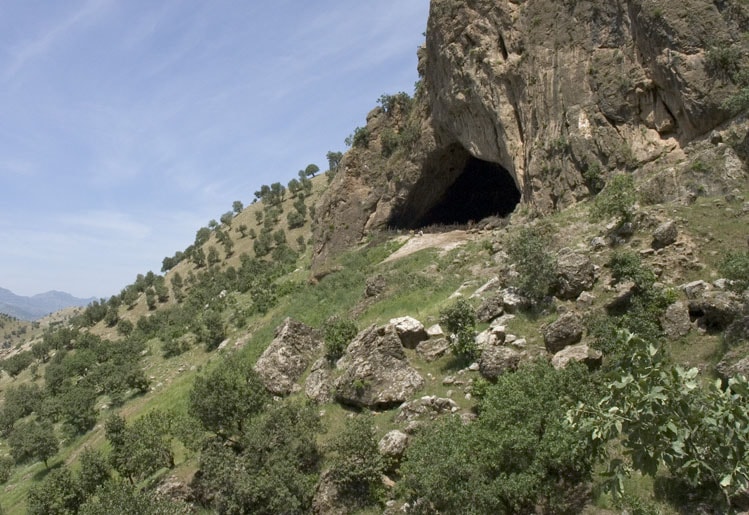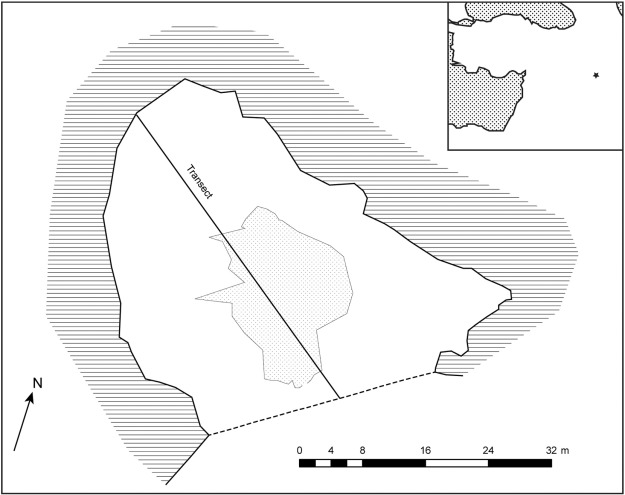Travelers walked with one destination in mind, Abu Mina (Figure 1). Rumors foretold Abu Mina’s mythical healing powers which grew the attention of travelers from all over. The stories mentioned magical flasks that would somehow heal the sick and broken. These long adventures the sick and misfortuned took to reach this site connected their stories. No matter where they came from, wherever in the world, this journey was universal for so many. This may have created a sort of spiritual connection amongst all who took this pilgrimage.
The journey taken was one involving Menas Flasks (Figure 2) which derived power from Saint Menas. Menas was executed due to his faith, and his unchangeable faith may have given him a sort of magic quality (Anderson 2007). His power led to many miracles.
One miracle tells a story of a worker who was killed when the roof of a church fell onto him, his body was placed before the Saint’s relics, and the Saint resurrected the worker (Beshir 13). His relics became a sought after wonder that sparked a pilgrimage.
Another miracle is the story of a blind man whose sight could not be restored. This was until he reached the relics of the Saint and sent out prayers, and his sight was restored to him (Beshir 13-14). These stories sparked hope in the pilgrims that followed them, and though some may think that’s foolish, others may argue that’s the essence of pilgrimage. Pilgrimage involves following by faith, and faith is not guided by things that are easily proven.
The world is a large place, and even with that, there are connections everywhere that unite us. The pilgrimage taken was for a miracle that could not have been proven, but it incited a stark hope in those that took the journey. Pilgrimage was seen as a religious requirement for some to find their salvation, so this in addition to the miracles could have been some of the most important aspects of their life on Earth. It was possible that without this pilgrimage, they may have never felt that they could have been saved, and they may have never built connections through their faith in such a widespread way.
A beauty of pilgrimage is that it can hold many different interpretations of the same event or place, and these different views don’t have to go well together, they can exist in their own places of the same world. Yet, at the same time, they coexist to create a beautiful blend of ideas in possibilities for the past, that all can better help us understand the events of our present.
References:
Anderson, William. “Menas flasks in the West: pilgrimage and trade at the end of antiquity.” Ancient West & East 6 (2007): 221-243.
Beshir, Victor. “The Discovery of a Christian Pilgrimage Center in the Western Desert of Egypt.”
Image Links:
https://www.flickr.com/photos/isawnyu/7551821938
https://art.thewalters.org/detail/92365/pilgrim-flask-of-saint-menas-3/
Additional Links:
Rodziewicz, Mieczyslaw D. “Supplement to the Article Philoxenité‒Pilgrimage Harbour of Abu Mina BSAA 47, 2003, 27-47.” Bulletin de la Société archéologique d’Alexandrie 49, no. 1 (2015): p-195.
https://journals.ekb.eg/article_303216_43eafb675cc34d651a750537708bba41.pdf
Collins-Kreiner, Noga. “Researching pilgrimage: Continuity and transformations.” Annals of tourism research 37, no. 2 (2010): 440-456.
https://www.sciencedirect.com/science/article/pii/S016073830900142X


